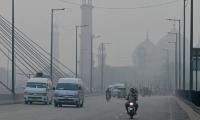LAHORE: The economic boom in India, Bangladesh and China occurred with the inclusion of women in these countries in the economic mainstream. Women’s participation in our economy, unfortunately, remains one of the lowest in the world.
In Pakistan, a majority of families have one breadwinner who is mostly men, while the role of women is restricted to household chores. The risk of a family falling into poverty is high if the sole breadwinner falls ill or gets severely injured. Another helping hand in the family would have reduced the risk. Poverty in those countries where women work side by side with their men has either vanished or is reducing more rapidly than in countries where only men go outside to earn bread for their families.
Pakistan has failed to realize its actual potential because only 50 per cent of its adult population is engaged in economic activities, while women who make up the remaining 50 per cent of the population mostly remain out of the economic mainstream. This is why when growth accelerates to a certain level, there is a shortage of workers in factories and trade centres.
Irrespective of the economic outlook of our one-breadwinner country, the percentage of the vulnerable fluctuates between 30 and 40 per cent. Vulnerable families spend 80 per cent of their income on low-nutrition food, which leaves them with no resources for health, education and proper shelter.
A quiet revolution has taken place in our neighbourhood where women are making a significant impact on their economies. In China and India, there are thousands of success stories of women workers who are driving the economies in these countries, leading to growth.
Bangladesh has become a role model in poverty eradication after empowering its women with finances through micro loans and large-scale employment in the value-added apparel sector.
In India, affluent urban women have a real taste of equality as they are equal partners in the prosperity of the family. This process has just started in Pakistan but is restricted mostly to Karachi and Lahore. For the rest there is significant gender discrimination, limited access to education, low formal labour-participation rates, and low wages. In Pakistan, though a large number of urban educated women are active in the economy, most of them are teachers, doctors or personal assistants.
Very few women have climbed up the ladder in the corporate sector of Pakistan. Still, there are thousands of women who have completed their masters or have professional degrees in medicine or engineering who are not working in the formal sector and stay at home.
The economic wellbeing of Pakistan is closely linked to the role that the women of this country will play in the next 10-20 years. We will be left far behind other countries if we continue to ignore our most productive workforce needed by our economy. Throughout the world women account for more than 50 per cent of the workforce in the apparel industry.
In Pakistan, the percentage of women workers in garment factories is hardly 10. If we promote our women workers in apparel, we will increase the size of the industry. Women will not replace men but will create more jobs through their expertise in stitching and designing.
After an increase in the cost of living in the past six years, it is not possible for a single male member of the family to ensure the same quality of life for his family that he could afford six years ago. He needs additional earning hands or would continue to suffer. In many cases, male ego prevents some talented and skilled women from entering the job market. This attitude must change for the wellbeing of families and the country.
An undated image of the Honda Atlas Cars logo. — AFP/FileKARACHI: Honda Atlas Cars Limited celebrated its 30-year...
InfraZamin and Sundridge Foods Limited officials posing for photograph. — Facebook@InfraZaminPakistan/FileKARACHI:...
This image shows an advertisement stall of BankIslami. — Facebook@bipl.official/FileKARACHI: JS Bank and BankIslami...
PCJCCI logo can be seen on a computer screen, image taken on November 5, 2024. — Thenews/AquibAliLAHORE: The...
A Wall Street sign hangs in front of a US Flag outside the New York Stock Exchange before the Federal Reserve...
A representational image of young people working in a company. — AFP/FileLAHORE: The ability of our economy to...







